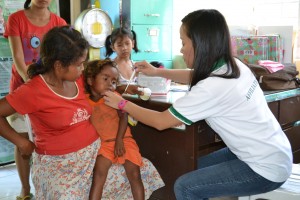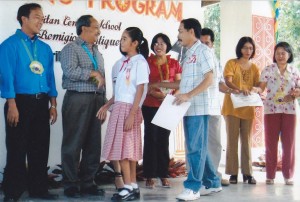What is Pantawid Pamilyang Pilipino Program?
• Pantawid Pamilya is a conditional cash transfer
(CCT)
program
that
provides
cash
grants to
poor
households
with
children
0‐14
years old
and/or
pregnant
mothers,
provided
that
they
comply
with the
conditions
set
by
the
program.
• It
is
a
social
assistance
program
that
provides
conditional
cash
assistance
to
the
poor
to
alleviate their immediate
needs
(short
term
poverty
alleviation);
and
• It
is
a
social
development
program
that
aims
to
break
the
intergenerational
poverty
cycle
through investments
in
human
capital.
• Child
rights
protection

Who
are
qualified
for Pantawid Pamilya?
1. A
household
may
qualify
for
Pantawid
Pamilya
as
a
beneficiary
if
it
satisfies
two
(2)
criteria:
At
the
time
of
the
assessment,
the
household
must
(1)
be
classified
as
poor,
based
on
the
National Household
Targeting
System
for
Poverty
Reduction
(NHTS‐PR)
and
(2)
have
a
pregnant
woman
and/or
children
0‐14
years
old
as
household
member(s).
Thus,
being
included
in
the
NHTS‐PR
list
of
poor
households
does
not
automatically
qualify
a
household
for
Pantawid
Pamilya.
In
the
same
manner,
not
all
households
with
a
pregnant
woman
or
young
children
as
members
will
qualify
for
the
program.
2. During
community
assemblies,
LGU
representatives
help
in
validating
the
list
of
household
beneficiaries.

 Sending children to school is an immediate goal of Pantawid Pamilya
Sending children to school is an immediate goal of Pantawid PamilyaWhat
are
the
conditions
of
the
Pantawid
Pamilya?
• Health
and
nutrition
conditions
require
periodic
checkups,
growth
monitoring,
and
vaccinations
for
children
0‐5
years
of
age;
twice
a
year
intake
of
de‐worming
pills
for
children
6‐14
years
old,
pre
and
post‐natal
care
for
pregnant
women
and
attendance
of
parents
in
family
development
sessions
where
responsible
parenthood
is
discussed.
• Education
conditions
include
day‐care
and
school
enrollment,
attendance
equivalent
to
85
percent
of
school
days
for
children
3
–
14
years
old.
• Both
conditions
are
meant
to
improve
the
poor
household’s
economic
prospects
to
help
them
move
out
of
poverty.
